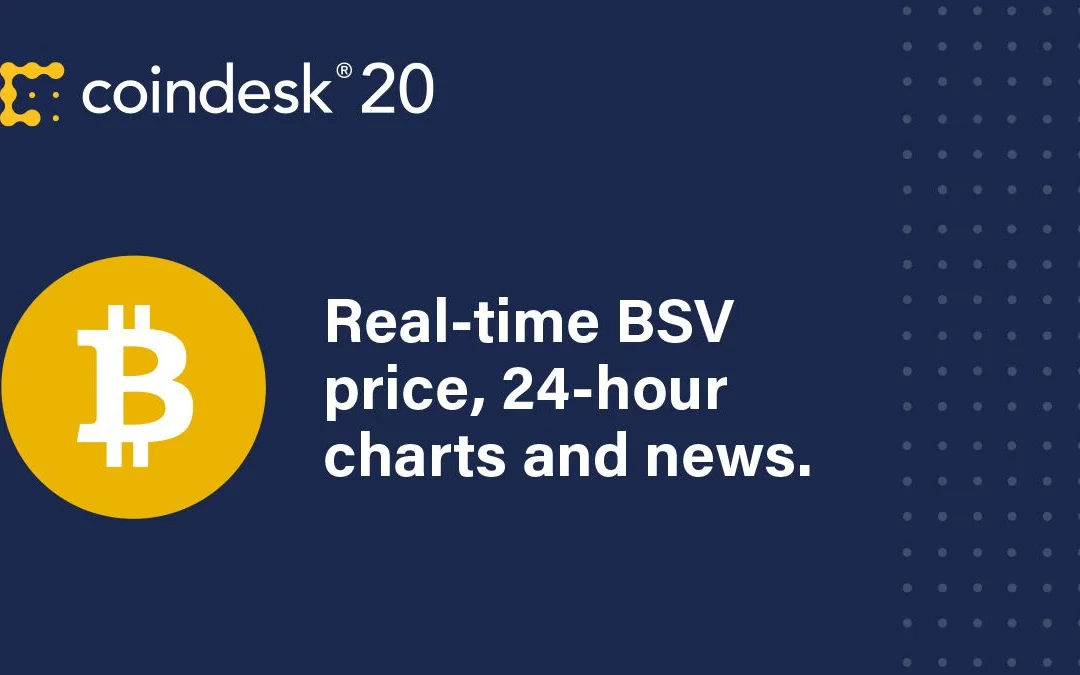BSV is the native cryptocurrency of Bitcoin Satoshi’s Vision (BSV), sometimes called Bitcoin SV: a blockchain created in 2018 after a hard fork from the Bitcoin Cash blockchain, which in turn was a hard fork of the original Bitcoin blockchain.
Hard forks can occur when conflict arises among the developers of a particular blockchain. If the developers cannot reach an agreement, it’s common to see them enact a hard fork, which essentially splits the blockchain into two separate chains. One continues being the original project, while the other becomes an entirely new blockchain.
Within the Bitcoin Cash project, tensions rose among developers over whether the protocol should be upgraded to accommodate smart contracts, larger block sizes (from 32 megabytes to 128 megabytes) and several other features. Those differences led to the creation of Bitcoin SV.
The name comes from supporters’ belief that cheaper fees align with Bitcoin inventor Satoshi Nakamoto’s original vision for the blockchain network. According to the project’s website, the blockchain was “created to restore the original Satoshi protocol, keep it stable and enable it to massively scale,” making it “unlike other bitcoin projects.”
A key backer of the project, Craig Wright, has publicly claimed to be Satoshi Nakamoto, though he has never provided conclusive evidence.
Bitcoin SV price
The BSV token is the native cryptocurrency of the Bitcoin SV blockchain. Some 17.5 million BSV tokens were distributed to Bitcoin Cash holders in 2018 at a ratio of 1:1, after the hard fork was initiated.
As much as the project’s backers insist that Bitcoin SV embodies the original goals of Nakamoto’s white paper, digital-asset markets have long since shown that investors judged the original Bitcoin network, anchored by the cryptocurrency BTC, to be the winner of the blockchain wars of the late 2010s.
BSV’s price has roughly doubled since late 2018, for a market capitalization of $3.1 billion as of November 2021. During the same time frame, BTC jumped 15-fold for a market capitalization of about $1.2 trillion.
Over the course of its short history, BSV price has been particularly affected by sharp price increases and decreases. During its first six days, BSV rose 383% to $260, but then fell by 84% over the following nine days. The crypto asset then pushed sideways for about six months until a brief jump pushed BSV price back to $260. Between January 2020 and May 2021, the price continued to trade sideways with just two brief periods when the price sharply rose above $400 and then quickly fell again.
It hasn’t helped that the Bitcoin SV has been hit by a series of attacks that eroded confidence in the network’s security. In August 2021, the Bitcoin SV network suffered a “51% attack” in which malicious miners took control of a majority of the blockchain’s hash power. One analyst concluded that the attack wiped 570,000 transactions, sowing further confusion.
How does Bitcoin SV work?
Similar to the Bitcoin blockchain, the Bitcoin SV network uses a proof-of-work consensus system, where cryptocurrency miners compete to discover new blocks by using specialized computing equipment. Each new Bitcoin SV data block contains 512 megabytes, versus a theoretical maximum size of two to four megabytes for the larger Bitcoin blockchain.
According to a September 2021 press release from the Bitcoin Association, the Bitcoin SV network demonstrated a throughput of 50,000 transactions per second during a live test earlier in the year, “all at a predictably low cost.” The median fee on the Bitcoin SV network in 2020 was 1/50th of a U.S. cent, the association said.
In August 2021, according to the same release, the Bitcoin SV network set a world record when a two gigabyte data block was successfully mined, “the largest ever mined on a public blockchain.”
A post on the Bitcoin Association’s website says that MNP, an accounting and business consulting firm in Canada, released a report in 2021 concluding that the original Bitcoin network was “intended to be a transaction network for digital cash to compete as a global payment system,” and that the Bitcoin SV network was found to be “most representative of Satoshi Nakamoto’s original intention for Bitcoin.”
Key events and management
Bitcoin SV’s development is led by nChain, a U.K.-based blockchain technology company, and the new cryptocurrency was supported by early Bitcoin Cash proponents, including Craig Wright, an Australian computer scientist, and Calvin Ayre, a Canadian entrepreneur.
Wright has publicly claimed to be Satoshi Nakamoto but has never produced conclusive evidence, and some doubters have produced a welter of data suggesting that the story is made up.
Wright went so far as to register a copyright for the 2008 Bitcoin white paper, and he’s also filed lawsuits against some of his more notable detractors, including Ethereum co-founder Vitalik Buterin and Blockstream CEO Adam Back, alleging a range of offenses including defamation and libel. Several of the cases have been dropped or dismissed, and Wright was ordered at least twice to pay the defendants’ legal costs.
The Bitcoin Association is a Swiss nonprofit that helps to advance Bitcoin SV, according to the group’s website.
Calvin Ayre, founder of Ayre Group and CoinGeek, serves on the Bitcoin Association’s executive committee along with Stefan Matthews, chairman of TAAL, an enterprise blockchain transaction processor; and Jodok Wicki, a Zurich-based partner at the law firm CMS.














